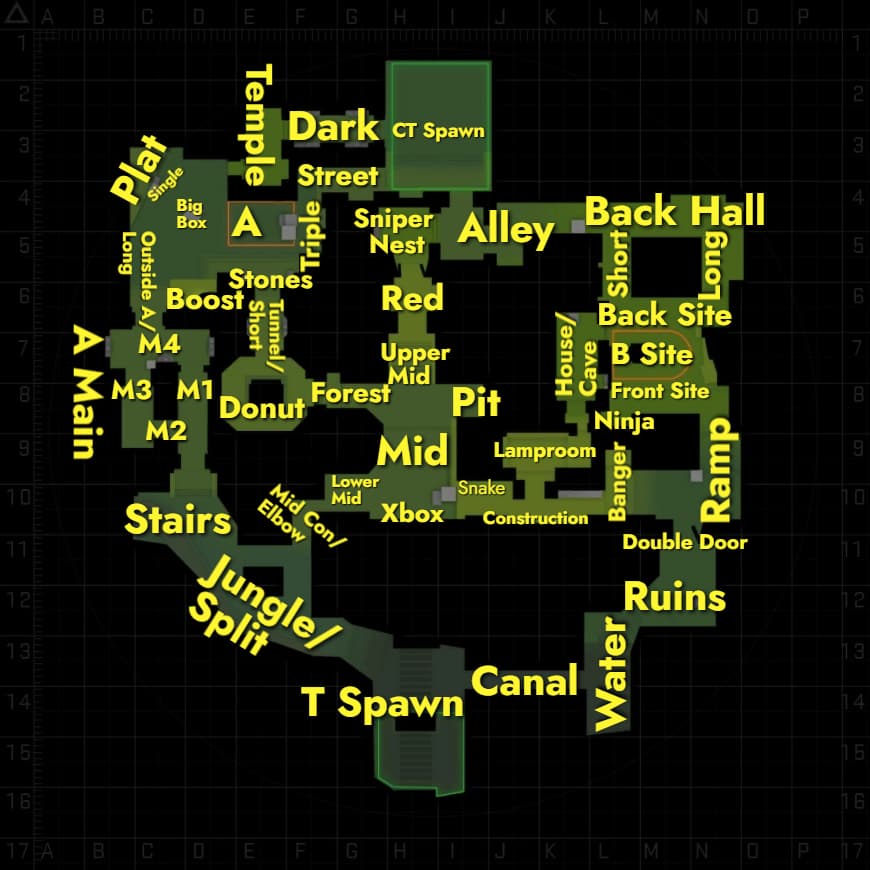CamiForm: Your Source for Diverse Insights
Exploring a world of information across various topics.
Navigate CS2 Maps Like a Pro: Tips and Tricks You Didn't Know
Master CS2 maps with lesser-known tips and tricks! Unlock pro strategies and elevate your gameplay in just a few clicks!
Top 10 Essential Tips for Mastering CS2 Map Navigation
Mastering CS2 map navigation is crucial for gaining a competitive edge in gameplay. One of the top tips is to familiarize yourself with the layout of the maps. Spend time in offline mode or custom games to explore each area, noting the locations of key resources, choke points, and strategic vantage spots. Furthermore, regularly checking the minimap during matches can help you stay aware of your surroundings and the positions of your teammates and enemies. Remember, understanding the map is just as important as honing your shooting skills.
Another essential strategy is to utilize sound cues effectively. Pay close attention to footsteps, bomb plants, and other audio signals to gain insights into enemy movements. This can help you predict their actions and make informed decisions about when to engage or retreat. Additionally, consider incorporating teamwork into your map navigation. Coordinate with teammates and share information about enemy positions or potential ambush spots. By following these tips and incorporating consistent practice, you'll master CS2 map navigation and enhance your overall gameplay experience.

Counter-Strike is a popular tactical first-person shooter game that pits teams of terrorists against counter-terrorists in various objective-based scenarios. Players can customize their weapons and gear, and one of the more unique items is the Zeus x27. You can find more about cs2 zeus skins to enhance your gaming experience. The game is known for its competitive scene, with numerous tournaments held globally.
Common Mistakes to Avoid When Learning CS2 Maps
Learning CS2 maps can be a challenging yet rewarding experience, but many players make common mistakes that hinder their progress. One of the biggest pitfalls is neglecting to study the layout of each map. Understanding the geography of a map, such as the location of bomb sites, choke points, and important cover spots, is crucial for success. Players often skip this step, leading to confusion during gameplay. To avoid this mistake, take the time to explore each map in offline mode or through community tutorials; this practice will greatly enhance your navigational skills and overall game strategy.
Another frequent error is failing to communicate effectively with teammates. In CS2, teamwork is essential; being unaware of enemy positions or not calling out crucial information can significantly affect the outcome of a match. Many players tend to play solo, disregarding the importance of communication. Always use your microphone or chat function to inform others of your findings and listen to their calls as well. This collaborative approach not only helps avoid chaos but also strengthens your team's chances of victory across various CS2 maps.
How to Read the Map: Key Features and Callouts Explained
Understanding how to read the map is essential for navigating unfamiliar terrain or planning a route. The key features to pay attention to include legend, scale, and compass rose. The legend provides a list of symbols and their meanings, helping you decipher important information at a glance. The scale indicates the ratio of a distance on the map to its actual distance on the ground, allowing you to calculate how far you need to travel. Lastly, the compass rose shows the cardinal directions—North, South, East, and West—enabling you to orient yourself and understand the map's layout.
In addition to these features, callouts highlight significant points of interest, such as landmarks, natural resources, and routes. Look for callouts that are often presented in a distinct color or font to grab your attention. These highlights can assist you in making quick decisions during your journey. Moreover, maps may also include additional information such as elevation lines to indicate terrain changes. Familiarizing yourself with these features will enhance your confidence and competence in map reading, empowering you to explore with assurance.